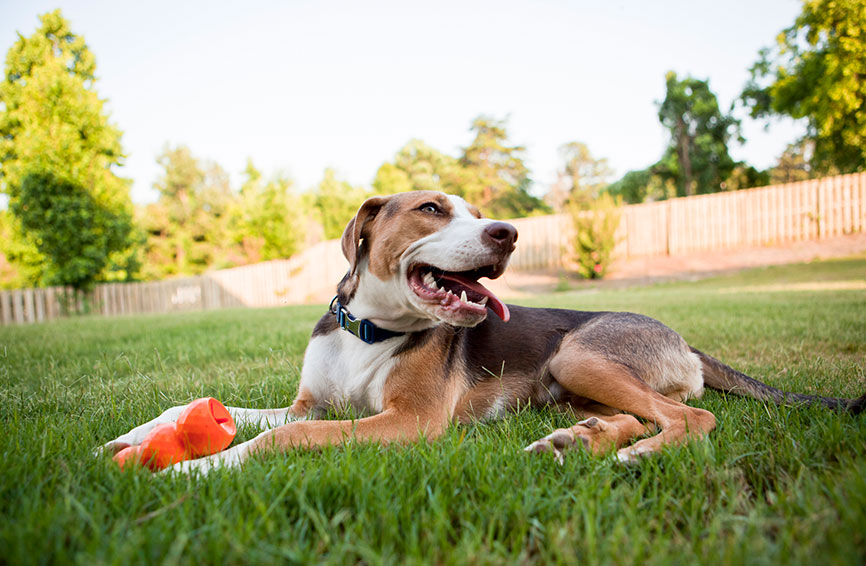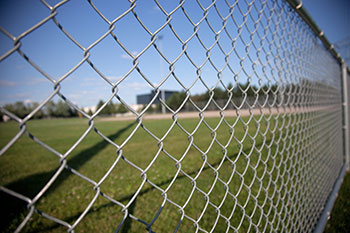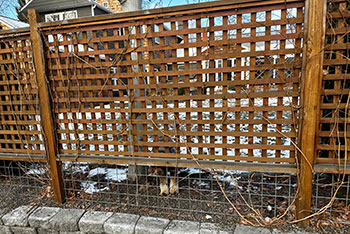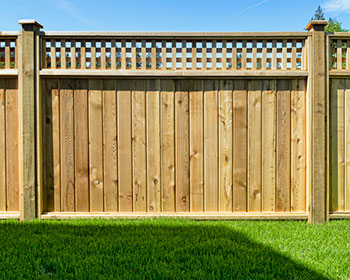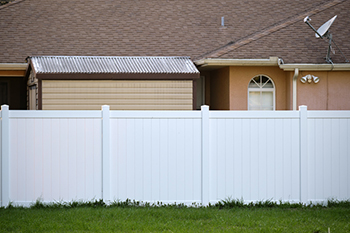Table of Contents
Introduction
If you are lucky enough to have a backyard for your dog to play in, you probably have wondered what the best fence is to keep your four-legged friend safe.
There’s a wide variety of fence types and materials, and you’ll want to choose one that is safe and secure. There are a lot of factors to consider when choosing a fence for your dog. You need to consider the size and breed of your dog, your budget, and the look of the fence. You should also check local building laws or homeowners association rules. Many neighborhoods, municipalities, and cities have limits on how tall a fence you can build.
A few different types of fences are recommended for dogs, and we’ve compiled a list of the best ones.
How tall should your fence be to protect your dog?
The height of the fence should be adequate to ensure your dog can’t jump over it. This, of course, will depend on how big and athletic your dog is. A four-foot-high fence may be fine for your Corgi but woefully inadequate for a German shorthaired pointer. In general, you want a fence that is impossible for your dog to jump over on their best day. Small dogs generally require only a 3-foot fence, while a medium or large dog will need a fence to be at least 6 feet tall.
What fence materials are best for dogs?
The material you choose will depend on your dog’s size and temperament. If the fence fronts a sidewalk or street and your dog is a “fence runner,” who barks and charges the fence anytime someone walks by, you will want a solid fence they can’t see through. For smaller dogs, you want to make sure they can’t get their head or collar stuck in between posts.
Cost of fences for dogs
The fence cost will vary widely depending on how large it is, the materials used, where you live, and whether you do it yourself or hire a contractor. A new fence installation typically costs between $1,500 to $4,000, with the average homeowner spending $2,550, according to Home Advisor. A brick or stone barrier is going to be considerably more.
If you are low-income and need a fence for your dog, you may be able to get help from a charity. Fences for Fido is a non-profit based in Portland, Ore. that will install a fence for free if you qualify. The charity aims to end the chaining of dogs or containment in a small pen by giving them a safe space to run.
Types of fences for dogs
Wire and chain link fence for dogs
Chain link fences are one of the most popular fences for dogs and the most economical. They provide good visibility, which is essential for keeping an eye on your dog. Chain link fences can be installed by a professional or do-it-yourself, making them a good option for people with different levels of experience.
If you want a chain link fence, you need posts and a roll of chain link. You or a professional installer will mount the posts and then secure the chain link to the posts. These fences require little to no maintenance. One downside is that they do not allow for privacy, and your dog will be able to see and interact with people or dogs passing by. Consider a different type of fence if you think your dog might be upset or even try to lunge at passersby.
Lattice fence for dogs
A lattice fence will look like a wood fence but with more visibility than a solid fence. The basic structure of the fence consists of vertical posts and a top and bottom horizontal beam to give support. Lattice panels will be premade and may have a square pattern or with diamond-shaped holes.
Like the chain link fence, this will allow your pup to see out and any passersby to see in, so it’s not a great option for reactive dogs.
Wooden fence for dogs
Wood is popular for fences because it is sturdy and looks attractive. It provides more privacy than a wire fence for you and your furry friend.
A wooden fence is more complicated to build and may require a professional. You’ll place your posts first if you are handy and want to make a wooden fence. Then attach two to four horizontal beams. You then attach vertical slats to the beams, connecting each slat to the others. This will create a solid wall with no gaps.
You can customize your fence by adding a decorative lattice trim, painting it, or placing rocks beneath it on an uneven property.
The downside of wood fences is that they are the most expensive and require regular maintenance.
Metal fence for dogs
Metal is a beautiful and low-maintenance fencing material that can take several forms. It can be used to make a solid fence made of aluminum sheets or a minimal fence of spaced metal bars. Typically, the metals used for fences are steel, iron, or aluminum. A barrier made of any of these will be sturdy and hold up over time. Aluminum is rust-resistant, and if steel or iron gets scratched, you can paint it to prevent rust. A well-maintained steel or cast-iron fence can easily last 20 years or longer. An aluminum fence can last a lifetime. Steel and cast-iron fence panels are heavy and tricky, so you may want to hire a professional for this type of fence.
Picket fence for dogs
If you’ve always dreamed of a house with a traditional picket fence, you can choose one that will work with some small dogs. Since picket fences are often relatively low in height, they won’t work for bigger or reactive dogs.
Picket fences consist of wooden slats with a gap between them and often have a pointy cap on top. White is the stereotypical color, but the wood can be stained, sealed, or painted any other color. Even for small dogs, ensure the fence is high enough to contain them.
Picket fences are among the easiest to do yourself – you need a decorative fence post and some caps for the top for interest. Most hardware stores will have fence panels already fabricated. Remember, like the wooden fence, a picket fence will require maintenance when the wood eventually warps and rots.
Vinyl fence for dogs
Another fence material that provides privacy and security is vinyl. These solid panel fences are typically tall, and your dog cannot see out, and strangers can’t peer in.
If you decide to install your own vinyl fence, ensure the supporting posts are far enough apart to give the barrier some flexibility. The posts should be buried deep in the ground for stability, as vinyl fences tend to lean if not secure. Backfill the fence holes with gravel. First, place the posts in the corners and then spread them evenly between them.
Brick or stone fences for dogs
A brick or stone fence is charming, but it’s going to be one of the most expensive options, and the hardest to install. The advantage is that these barriers can be beautiful and blend in well with the landscape and are strong enough to contain the most boisterous dog. It’s also going to be low maintenance and will last a long time.
Stone fences can either be constructed by painstakingly placing stones Tetris style, with cement holding it together, or with a wire structure holding the stones in place. You can use either natural stone (more expensive) or faux stones.
A brick fence has the same advantages of the stone fence, but is easier to install. Love Home Designs estimates a brick wall will cost $6,846 if you hire a contractor. A popular option is also to have posts made out of brick and wrought iron as the fencing material.
Like other fences, a stone or brick wall needs to be tall enough to contain your dog.
Invisible or electric fences for dogs
Invisible fences are popular among people who want their property to look like it doesn’t have a fence at all but still functions to contain their pets. They may have wires installed underground or be wireless and use GPS. However, dog trainers and behaviorists strongly discourage this type of fence because it can cause confusion and mental anguish to dogs.
Much like shock collars, electric fences often administer a shock to the dog if they wander too far. This is painful, and your dog does not know why he is being shocked, so it’s like punishing them for reasons they don’t understand.
Electric fence companies claim the fence doesn’t hurt the dog, and it only takes a few times for the dog to learn, but many trainers disagree.
“While this may be effective in keeping your dog in the yard, it can create behavioral issues, such as fear reactions, insecurity, and overall stress. A dog may start to fear people and other things it sees near the fence. These tactics can damage your relationship with your dog, as you are severing the bonds built on trust, and your dog will no longer feel safe with you,” said Sarah-Anne Reed, Healthy Paws consulting dog trainer.
Since the fence is activated by a collar worn by a dog or cat, it also doesn’t prevent people or other animals from entering the yard, so it doesn’t provide much security.
Fences for escape artist dogs
Finally, suppose you have a dog who is a real escape artist, either by digging or jumping. In that case, you may have to go the extra mile and consider an enclosure with an extended fence, a top, or a “roller” that prevents animals from getting in or out if they reach the top of the fence.
Conclusion
No matter what type of fence you choose, the most important thing is to ensure it is tall and secure enough that your dog cannot escape. Choosing the right fence for your circumstances will allow you to rest assured that your dog is safe.
